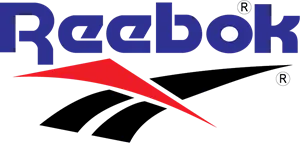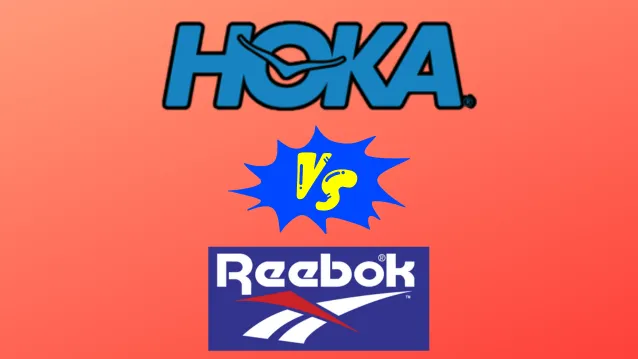With so many athletic shoes to choose from, finding that perfect pair can be a challenge.
Hoka and Reebok are top contenders blending performance with style. But with their unique histories and designs, should you go for a trusted household name like Reebok or a specialized newcomer like Hoka?
This comparison outlines the key differences between the two brands across all criteria – from cushioning and durability to purpose and style. Read on to see which brand matches your style.
Comparison Table Between Hoka And Reebok:
| Category | Hoka | Reebok |
|---|---|---|
| Founded In | 2009 France | 1895 England |
| Comfort & Fit | Maximum cushioning | Pressure mapping for comfort |
| Color Options | Muted tones | Vibrant and bold colors |
| Durability | Average lifespan | Long-lasting materials |
| Performance | Soft, cushioned ride | Responsive with energy return |
| Design & Style | Chunky, curved shape | Traditional sporty aesthetic |
| Popularity | Niche “cult” following | Established household name |
| Best Seller | Hoka Bondi 8 | Reebok Nano |
Hoka Overview:
Founded in 2009 by Nicolas Mermoud and Jean-Luc Diard, Hoka One One burst onto the scene with their super thick midsoles, aiming to provide maximum cushioning for runners.

Initially, their oversized design was polarizing. But as more runners experienced the plush ride, Hoka gained a cult following among ultramarathoners and trail runners.
Hoka remains focused on cushioning and stability to create a smooth, comfortable run. Signature technologies like the Meta-Rocker outsole encourage a natural gait cycle and transition. The roomy toe box allows your feet to splay and relax over long miles.
For runners who struggle with joint pain and hard impact, Hoka’s pillow-like foam brings sweet relief. The soft landings and energetic rebound make each stride feel effortless. It’s easy to see why Hokas have a reputation for comfort.
Hokas aren’t the most flexible shoe due to the higher platform. And the bulky silhouette isn’t for everyone. But for runners craving a cushy feel, Hoka delivers plush shoes that can go the distance in blissful comfort.
Reebok Overview:
With a long legacy spanning over 100 years, Reebok remains one of the most established and iconic athletic brands worldwide.
Founded in England in 1895 by Joseph William Foster, Reebok’s history dates back to innovations like the first spiked running shoe.

Now headquartered in Boston, Reebok engineers shoes for performance, comfort, and style across training, running, and everyday wear.
Reebok incorporates proprietary technologies like DMX Shear cushioning and Floatride Energy foam to provide both cushioning and responsiveness.
With pressure mapping and Memory Tech Massage footbeds, many Reebok shoes contour precisely to the shape of the foot for a truly customized fit and feel.
The brand also remains committed to sustainability, using recycled materials in over 75% of product lines. From vintage styles like the Freestyle to fitness must-haves like the Nano, Reebok’s timeless sporty designs have universal appeal.
With both substance and style, Reebok continues pushing boundaries while staying true to its classic roots.
Major Differences Between the Brands;
We have seen an overview of both companies. In this section, we will compare Reebok and Hoka in-depth to decide who is a better bet.
1) Comfort and Fit
While both Hoka and Reebok aim to cushion and comfort feet, they take different approaches.
Hoka’s extra-wide, rockered soles focus solely on plush shock absorption and energy return to produce a floaty feel. Reebok uses technologies like 3D pressure mapping and Memory Tech insoles to contour precisely around individual foot shapes for a truly personalized fit.
For those wanting softness above all, Hoka can’t be beat – but Reebok offers a more customized and adaptable fit.
Also Check Out: Sorel VS Hoka: Which Is Better?
2) Durability and Performance
Tested over miles, Reebok outsoles and upper materials stand up well to repeated wear, lasting far beyond Hoka’s compressed foam midlayers.
Reebok incorporates carbon rubber in high-abrasion areas for enhanced resilience while Hoka’s soft foam cushioning tends to pack down and deteriorate faster.
Reebok also balances cushioning with a responsive feel that returns energy on your toe-off. Hoka’s extra padding absorbs impact but can dull road feel and feedback. For long-haul durability across tempo runs, sprints, and gym sessions, Reebok rises above.
Also Check Out: Bala VS Hoka: Which Is Better?
3) Price
With an average price of around $120, Reebok shoes come in lower than Hoka’s typical $150 average cost. Reebok offers options from budget-friendly classics around $40 to high-performance styles reaching $220. Hoka prices also range from $100 to $250 on average.
While both incorporate advanced technologies, Reebok’s greater selection of affordable everyday styles gives them a value advantage.
Also Check Out: Hoka Vs Vionic: Which Is Better?
4) Design and Style
Hoka’s maxi-cushioned sole and sleek curves create a futuristic, fashion-forward look. Reebok keeps to a traditional sporty aesthetic, sculpting a variety of classic silhouettes in vibrant colors.
For head-turning shoes that make a statement, Hoka leads for a cutting-edge style. But Reebok offers heritage designs that pair seamlessly with jeans and athleisure wear.
Also Check Out: Kuru VS Hoka: Which Is Better?
5) Popularity
As an established brand for over a century, Reebok maintains far wider recognition and appeal compared to Hoka’s small yet loyal following.

The bold Vector logo represents Reebok’s household name status, while niche runners and serious athletes know Hokas.
Unless you crave serious cushioning or uphill trail performance, you’re more likely to sport Reebok’s accessible and trendy styles for everyday wear.
Also Check Out: Dansko VS Hoka: Which Is Better?
6) Target Market
With maximal cushioning and stability, Hoka explicitly targets injury-prone runners needing comfort along with hardcore ultramarathoners wanting a cushioned edge for long distances.
Reebok seeks a broader audience, designing shoes versatile enough for training, sports, and lifestyle wear for men and women.
Unless you need Hoka’s specialized solution for high-impact cushioning, Reebok offers styles suited for wider demographics and purposes.
Final Verdict:
In this battle between niche newcomer and trusted icon, Reebok takes the prize for their proven performance, durable construction, and perennial popularity across athletes and activities.
While Hoka’s pillow-like cushioning stands out, Reebok does more as well-rounded shoes ready to complement your life, not just running.
Unless you’re recovering from injury or logging ultra distances, Reebok offers the accessibility, comfort, support and style to empower your fitness, sport, and life in motion. Tried and true, Reebok remains a champion.


